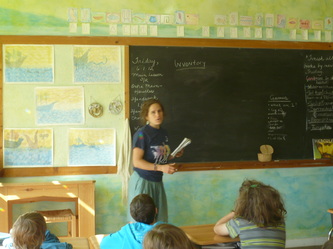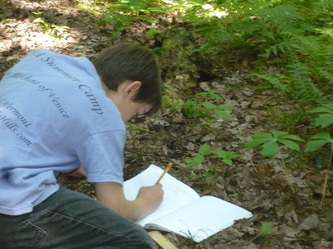Above students diligently weave dream catchers.
Below, are techniques I employ to help the learning process be more varied, accessible, empowering, and engaging for students.
_Algo-heuristic Transformations

_While
textbooks provide accurate and helpful technical information for
learning science, their algorithmic format and activities are not often
conducive to facilitating student-centered inquiry. However through
transforming these models into more heuristic activities, I
invite students to 'muck about' with concepts in a self-directed investigation. Below are examples of potentially limited lessons
transformed from didactic to experiential activities
through which students can learn.
3 Algorithms and My Transformations
3 Algorithms and My Transformations
Challenge Board

_Challenge boards offer various ways which students can choose from in order to continue to explore concepts we learned in class at their own pace, in their own space, and through their own chosen medium of expression.
Simplified challenge board
Challenge board with leading questions
Simplified challenge board
Challenge board with leading questions
Moral Dilemmas
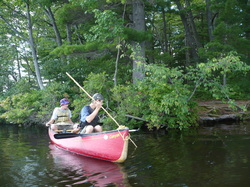
_A moral dilemma can be a powerful activity to provide at the end of a unit when students have a foundation in particular scientific concepts. Moral dilemmas invite students to grapple among themselves and with their own understandings in the complex junction where science meets society. These activities are most effective when the teacher, remaining neutral, provides a framework in which students are challenged to use the scientific language and conceptual understanding they have previously developed. Through this dialogue students explore different dimensions of a topic to gain a more holistic perspective.
Life Science Dilemma
Life Science Dilemma
Geology Unit Convening Letter

Last year in an Antioch core class 'Curriculum Design,' I designed this unit and presented it to my colleagues through a convening letter, microcurriculum, and macrocurriculum which together include an outline of the unit, a week of lesson plans, rubrics, homework, and a final assessment.
Microcurriculum
Macrocurriculum
Microcurriculum
Macrocurriculum
Science Lab Introduction and Rubric

Fall 2011 at Antioch in 'Science Teaching Methods' class we were asked to create a rubric for a science lab. I included an introduction for students who are not clear on the purpose of labs in science class.
Science Lab Intro and rubric
Science Lab Intro and rubric
Environmental Science Syllabus
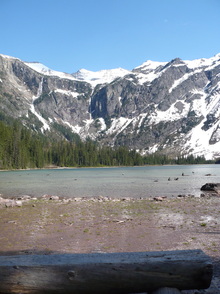
In our 'Science Teaching Methods' fall 2011, I created this mock environmental science syllabus. It roughly lays out one of the courses I will be student teaching in spring 2012.
Mock Environmental Science Syllabus
Mock Environmental Science Syllabus
Universal Design Learning Curriculum (UDL)

During our first semester at Antioch in a required course called "Teaching every student" I created a four week curriculum involving watershed study and restoration which is accessible to students with various learning challenges. In the curriculum are several links to technological alternative lesson plans and various modes of exploring the content material, depending upon students' needs and preference.
How Can You Help Restore the Winooski River's Relationship to Lake Champlain?
Lesson Plans with UDL Supports
How Can You Help Restore the Winooski River's Relationship to Lake Champlain?
Lesson Plans with UDL Supports
Three-Six Minute Lectures
While most of the curriculum I deliver is through hands-on activities, there are times where introducing a unit's framework is effective in a brief and engaging lecture. While the lecture below is very rough with too many pauses, (and several mistakes: i.e. there are 5 not 4 earth systems-neglected the pedosphere..)you can see through it how I attempt to introduce the upcoming Geology Unit in an interesting and relevant way which may help draw students into the material. This lecture was given to my colleagues in spring 2010's 'Curriculum Design' class at Antioch. Since then, my mini lectures have a much more dynamic quality as I am more comfortable in front of classes and have spent lots of 'dirt' time with whatever material I am delivering:)
Community Service Projects rooted in Curriculum
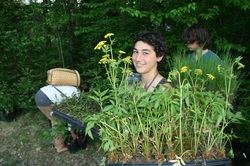
In May 2012 I co-facilitated a two day permaculture program for high school Kroka semester students. On the first day after reflecting on different plant and tree communities we noticed on recent travels, we were introduced to basic permaculture principles and observed a demonstration of how to plant shrubs and herbaceous perennials. We debriefed amidst the surrounding amphibian and bird communities. The next morning after reviewing the basics of botany and reviewing ecosystem requirements for each species, we began to plant shrubs and herbaceous perennials in polycultures around the pond. Throughout the day we braked to explore concept maps, botanical details, and geologic timescale orientation. After over 600 plantings we sat quietly and reflected on whatever intrigued us while observing the surrounding natural community. We reviewed all we learned incorporating earth and life science concepts. Finally we shared our curiosities and insights.
Unit Design
Concept Map
Geologic Timeline
Pond Plantings
Unit Design
Concept Map
Geologic Timeline
Pond Plantings
Service Learning

Our 5th grade Botany class learning was deepened through service to the land surrounding our school. After a class brainstorm of the factors to consider then planting something in the forest, each student was given a plant or tree species to research. Time was then provided for each student to locate the ideal spot to plant and after gathering more pertinent data such as soil ph, moisture levels, surrounding plant communities we each planted our species. There was time to reflect on this process as well as to water, mulch, and continue to tend these plants in their first few weeks of growth.
Botany Lens
Botany Template
Botany Unit Plan
Species Planted
Meet a Tree Guide
Geologic Timeline
Botany Lens
Botany Template
Botany Unit Plan
Species Planted
Meet a Tree Guide
Geologic Timeline
























